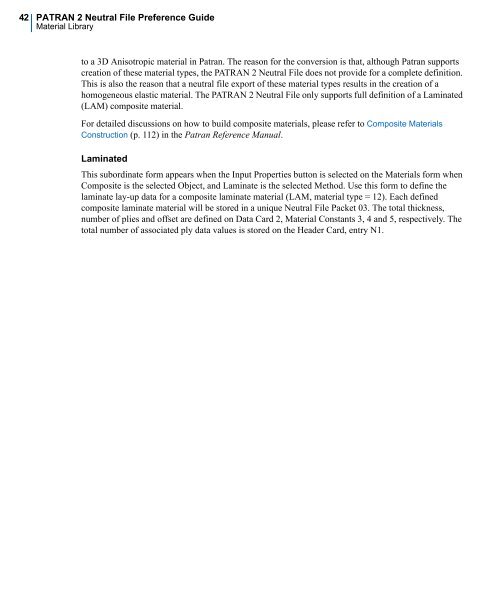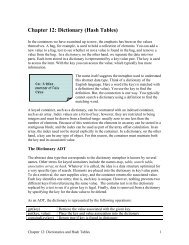Patran 2010 - Classes
Patran 2010 - Classes
Patran 2010 - Classes
You also want an ePaper? Increase the reach of your titles
YUMPU automatically turns print PDFs into web optimized ePapers that Google loves.
42<br />
PATRAN 2 Neutral File Preference Guide<br />
Material Library<br />
to a 3D Anisotropic material in <strong>Patran</strong>. The reason for the conversion is that, although <strong>Patran</strong> supports<br />
creation of these material types, the PATRAN 2 Neutral File does not provide for a complete definition.<br />
This is also the reason that a neutral file export of these material types results in the creation of a<br />
homogeneous elastic material. The PATRAN 2 Neutral File only supports full definition of a Laminated<br />
(LAM) composite material.<br />
For detailed discussions on how to build composite materials, please refer to Composite Materials<br />
Construction (p. 112) in the <strong>Patran</strong> Reference Manual.<br />
Laminated<br />
This subordinate form appears when the Input Properties button is selected on the Materials form when<br />
Composite is the selected Object, and Laminate is the selected Method. Use this form to define the<br />
laminate lay-up data for a composite laminate material (LAM, material type = 12). Each defined<br />
composite laminate material will be stored in a unique Neutral File Packet 03. The total thickness,<br />
number of plies and offset are defined on Data Card 2, Material Constants 3, 4 and 5, respectively. The<br />
total number of associated ply data values is stored on the Header Card, entry N1.

















